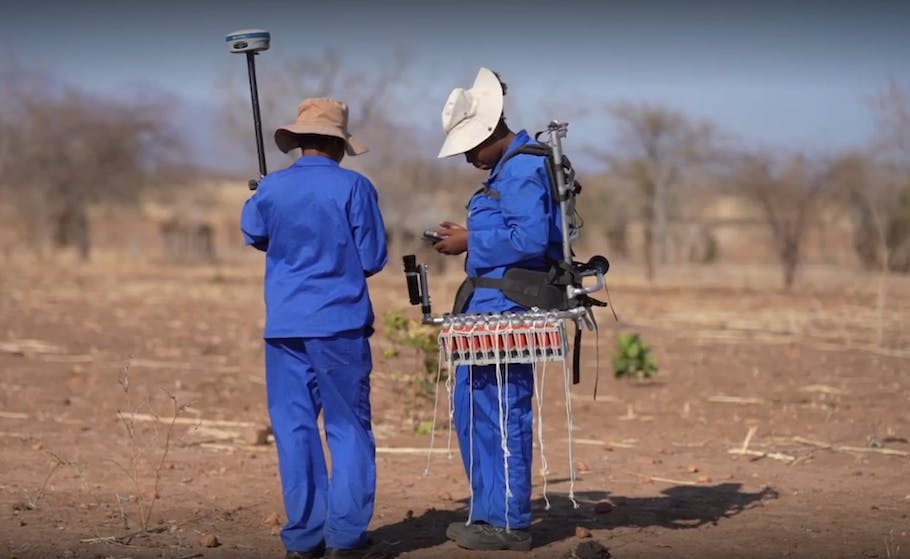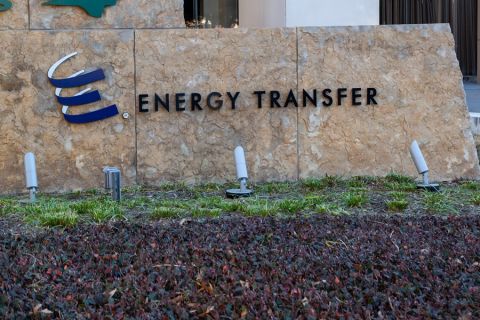Presented by:

This article appears in the E&P newsletter. Subscribe to the E&P newsletter here.
Unexplored during the country’s political unrest, Zimbabwe’s basins have largely been left dormant since the mid-1990s.
Last year Invictus Energy, an Australian gas and oil company, began a multimillion-pound E&P project to tap the last untested large frontier rift basis in onshore Africa—the Cabora Bassa Basin in northern Zimbabwe.
Welcomed by locals, the project has the potential to provide a solution to the country’s energy crisis, offering Zimbabwe the chance to not only be energy independent but shift its position to that of an exporter into the region.
To explore the petroleum potential of the frontier basin, Invictus deployed a 2D seismic campaign that resulted in a more cost-efficient acquisition and promoted safer operations while reducing environmental impact in complex and remote terrain.
Enabling survey excellence in remote locations
Seismic, an exploration process of gathering subsurface vibrations using advanced technology to determine the existence of hydrocarbons, was implemented by Canadian seismic contractor, Polaris Natural Resources, which is on a mission to help end energy poverty in Africa by enabling operators to explore the petroleum potential beneath the flat, savanna land.
Due to the remote survey location being deemed as an environmentally sensitive area, the team required an environmental impact assessment (EIA) to be completed prior to the survey being sanctioned, meaning it had to adhere to strict environmental footprint management conditions.
In addition to environmental concerns for the area, the location, in complex terrain coupled with the survey being weather dependent, also created logistical and time challenges.
The vast survey size traditionally would have required large volumes of seismic equipment to complete the survey effectively. However, as this was a frontier, unexplored basin, Invictus Energy required a solution that was low cost, without compromising the quality of the output dataset.
STRYDE’s nodal technology was selected to enable this crucial land seismic acquisition. STRYDE’s Nimble system (comprising 9,540 STRYDE Nodes, server and four Nests, navigator tablets, initiation devices, backpacks and the nodal operating software) and field support personnel were delivered on site in southern Africa within five days of the contract agreement to ensure the project started on time.
Unlocking high-density seismic, cost savings and safer working

Using 9,500 STRYDE nodes, more than 82,929 seismic receiver points were laid out by foot during the survey, resulting in a total of 839.5 km of high-resolution 2D seismic data being acquired, 402 km in Invictus’ Special Grant 4571 license and another 437 km of contiguous data in an existing application area.
As well as the vast seismic data acquisition, STRYDE’s system also unlocked significant cost savings, related to reductions in the number of people, equipment needed, logistics, vehicles and project time when compared to competitor cable and nodal systems.
Utilizing the world’s smallest and lightest nodes, the locally hired teams were able to carry 90 nodes per person by foot, resulting in being able to deploy and retrieve thousands of nodes per day. This minimized the need for line clearing and land disruption, shooting the survey in a more efficient manner, which reduced the project timeline considerably.
Continuously recording nodes allowed multiple receiver lines to be generated from a single shot line, resulting in the acquisition of high-resolution and increased density 2D lines and deep structure data that provided the insights required to make informed drilling decisions and to help plan future surveys.
The characteristics of the Nimble nodal system reduces the number of people and vehicles required to deploy and retrieve the nodes in the field, therefore reducing the acquisition contractor’s exposure to risks on site.
In addition to supporting the country becoming energy independent, the project also generated nearly 200 direct jobs during the campaign for the local Muzarabani and Mbire communities as well as the procurement of goods and services from local suppliers.

Promising prospects
The Nimble system is ideally suited to these kinds of remote 2D operations. The speed at which locally hired teams could learn how to operate the system allowed Polaris Natural Resources to deliver a very efficient project that delivered fantastic imaging results for Invictus Energy.
About 1.6 gigabytes of high-density 2D seismic data were successfully harvested from STRYDE Nodes, before being sent for processing and interpretation, enabling the company to identify and mature additional prospects and leads.
Drilling for the Muzarabani-1 well is underway, with the prospect considered to be the largest undrilled conventional oil and gas prospect onshore Africa. Invictus believes it could host prospective resources of about 9.25 Tcf of gas and 294 MMbbl of condensate.
STRYDE’s customers benefit from a substantially reduced environmental footprint, reduced HSE risk, faster surveys and significant operational and logistical efficiencies before, during and after acquisition.
About the author: Chris Einchcomb is a geophysical consultant with STRYDE.
Recommended Reading
For Sale? Trans Mountain Pipeline Tentatively on the Market
2024-04-22 - Politics and tariffs may delay ownership transfer of the Trans Mountain Pipeline, which the Canadian government spent CA$34 billion to build.
Energy Transfer Announces Cash Distribution on Series I Units
2024-04-22 - Energy Transfer’s distribution will be payable May 15 to Series I unitholders of record by May 1.
Balticconnector Gas Pipeline Back in Operation After Damage
2024-04-22 - The Balticconnector subsea gas link between Estonia and Finland was severely damaged in October, hurting energy security and raising alarm bells in the wider region.
Wayangankar: Golden Era for US Natural Gas Storage – Version 2.0
2024-04-19 - While the current resurgence in gas storage is reminiscent of the 2000s —an era that saw ~400 Bcf of storage capacity additions — the market drivers providing the tailwinds today are drastically different from that cycle.
Ozark Gas Transmission’s Pipeline Supply Access Project in Service
2024-04-18 - Black Bear Transmission’s subsidiary Ozark Gas Transmission placed its supply access project in service on April 8, providing increased gas supply reliability for Ozark shippers.




